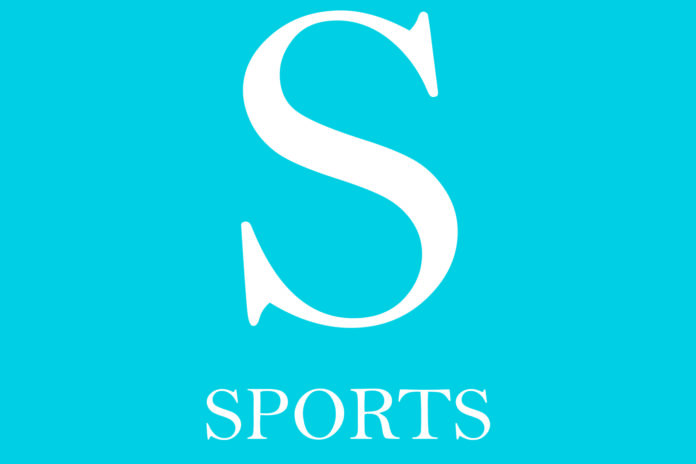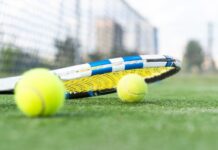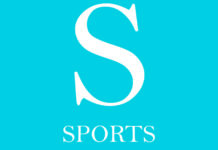A couple of high-caliber high school student-athletes decided to take their game to the NBA’s G-League in lieu of traditional NCAA basketball. Now, the NCAA’s Board of Governors announced that it intends to adopt name, image and likeness compensation for student-athletes beginning at the start of the 2021-22 academic year. Coincidence?
“The NCAA’s work to modernize name, image and likeness continues, and we plan to make these important changes on the original timeline, no later than January 2021,” said Gene Smith, the co-chair of the NCAA federal and state legislation working group and athletic director at Ohio State. “The board’s decision today provides further guidance to each division as they create and adopt appropriate rule changes.”
Under the new rules, student-athletes would be free to receive compensation for third-party endorsements both related to and separate from athletics. Student-athletes would also be able to profit off of social media, businesses they have started and personal appearances that fall within the guiding principles originally outlined by the board in October.
“I think Congress and the people in our country have seen coaches make millions of dollars on contracts, and the student-athletes are like, ‘we help generate that,'” Slippery Rock Athletic Director Paul Lueken said. “So, that’s why we are where we are.”
While student-athletes are permitted to identify with their school and sport, the use of conference and school logos, trademarks and other involvement would not be tolerated by the NCAA, and the board said no school should ever pay student-athletes for NIL.
Each of the NCAA’s three divisions will now decide how to handle the potential change, with the NIL rules change expected to be passed by all three divisions in January 2021.
“Throughout our efforts to enhance support for college athletes, the NCAA has relied upon considerable feedback from and the engagement of our members, including numerous student-athletes, from all three divisions,” Michael V. Drake, chair of the board of governors and president of Ohio State, said. “Allowing promotions and third-party endorsements is uncharted territory.”
With the vast differences across Divisions I, II and III, the rules adopted by each division could differ slightly.
Certain “guardrails” would need to be in place, including no NIL activities being considered pay for play, no school or conference involvement, no use of NIL for recruiting by schools or boosters and the regulation of agents and advisors.
Any change adopted by the divisions must be in accordance with the following NCAA guidelines:
- Ensuring student-athletes are treated similarly to non-athlete students unless a compelling reason exists to differentiate.
- Maintaining the priorities of education and the collegiate experience to provide opportunities for student-athlete success.
- Ensuring rules are transparent, focused and enforceable, and facilitating fair and balanced competition.
- Making clear the distinction between collegiate and professional opportunities.
- Making clear that compensation for athletics performance or participation is impermissible.
- Reaffirming that student-athletes are students first and not employees of the university.
- Enhancing principles of diversity, inclusion and gender equity.
- Protecting the recruiting environment and prohibiting inducements to select, remain at or transfer to a specific institution.
As potential challenges to modernizing rules posed by outside legal and legislative factors that could undermine the NCAA’s ability to take meaningful action, the NCAA will engage Congress to ensure the following:
- Ensuring federal preemption over state name, image and likeness laws.
- Establishing a “safe harbor” for the Association to provide protection against lawsuits filed for name, image and likeness rules.
- Safeguarding the nonemployment status of student-athletes.
- Maintaining the distinction between college athletes and professional athletes.
- Upholding the NCAA’s values, including diversity, inclusion and gender equity.
While this news is encouraging for the future of student-athletes in the NCAA, fans of the sport — forever hopeful for a reboot of NCAA Football — hoped this change would signal the popular NCAA video game coming back on shelves.
That probably is not the case, at least not yet.
Until there is a collective bargaining agency to represent the student-athletes, products like video games, replica jerseys and trading cards are “unworkable,” according to Co-Chair and Big East Commissioner Val Ackerman.
The road to new NCAA video games, and to compensation for student-athletes, likely has a long road to fruition.
How will the policies affect Slippery Rock student-athletes? Well, Athletic Director Paul Lueken just hopes they will be able to manage it.
“Each division is going to kind of mold the legislature to fit their division the best,” Lueken said. “Knowing there won’t be a huge marketplace for our student-athletes, it’s interesting. It obviously gives an opportunity.”
Perhaps the biggest challenge, something that Ole Miss head coach Lane Kiffin has said scares him already, will be monitoring and tracking the compensation of student-athletes.
“Most compliance offices in Division II are one-person shops,” Lueken said. … “It just makes it a little more difficult; the Power Fives are going to have whole departments for this to help manage the student-athletes.”
Slippery Rock’s own compliance department is run by Andrea Miller, who also serves as the senior woman administrator, and while Lueken knows she is more than capable, with associate AD Torry Rollins ready to help, it’s a daunting task.
With money still being so starkly different between the different divisions, Lueken said obviously that will be the same in terms of student-athletes being compensated. However, even in the different levels of D-I, Power Five, Group of Five, mid-major, Lueken said he expects big differences.
Of course, there will be exceptions, possibly with a team like Shepherd in the Pennsylvania State Athletic Conference, according to Lueken.
“I don’t think it’ll be quite as big in Division II,” Lueken said. “I could see it being big at Shepherd University, a town that has more businesses than we have and where football is kind of the only game around that area.”
With each division ironing out policies and procedures heading forward, Lueken envisions those talks coming down to discussions within the PSAC to help with uniformity.
However, like with the national conformity of the rules, more questions arise that haven’t been answered yet.
“Where do the Title IX laws come into this, this is more of a Title VII type thing, in terms of people getting paid for services, so that’s a different twist too,” Lueken said.
Lueken said he isn’t sure how it’ll work, but he hopes it’s fair for everyone. With Title VII and IX relating to gender, race, origin and religion equity, questions remain unanswered.
“I hope we can manage it to where it’s fair for everyone. That’s the most important thing. I don’t know how that will work.”
Lueken acknowledged the fact that it will probably end up used as a recruiting tool in Division I and, after a laugh, he said that it should not be.
“It’ll be interesting to see how it takes off at Division I and how much money there really is to be generated,” Lueken said. “I think you’re going to look at the revenue-producing sports, and this is going to produce revenue for student-athletes. Maybe this will make folks feel better about how much money athletic departments are making off college football and basketball.”
Nicole Auerbach of the Athletic detailed in her article, The NCAA’s plans for NIL open the door for change, but many questions remain, just how much money student-athletes could make.
“Opendorse shared the following example: USC redshirt sophomore cornerback Isaac Taylor-Stuart, who has accounted for 36 tackles in eight career starts,” Auerbach wrote for the Athletic. “Here’s what his current accounts look like and what Opendorse calculates that a pro athlete with similar following, engagement rate and average views per video could command endorsing products: 17,310 followers on Twitter: $900-1,800/year on Twitter, 32,798 followers on Instagram: $4,000-6,000/year on Instagram, 26,000 subscribers on YouTube: $1,000-2,000/year on YouTube.”
With social media playing a huge role in today’s society of social media influencers, the quickest route to compensation for student-athletes might just come from their own social media platforms.










